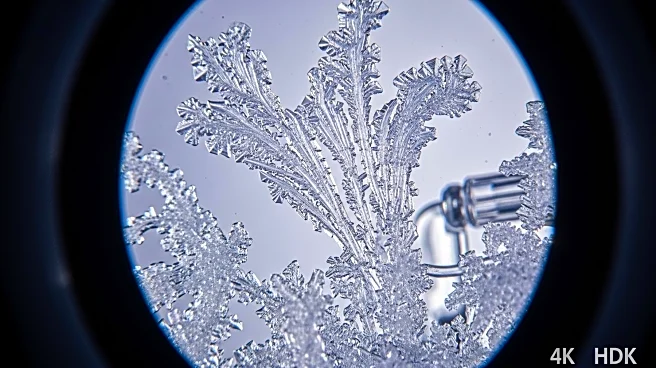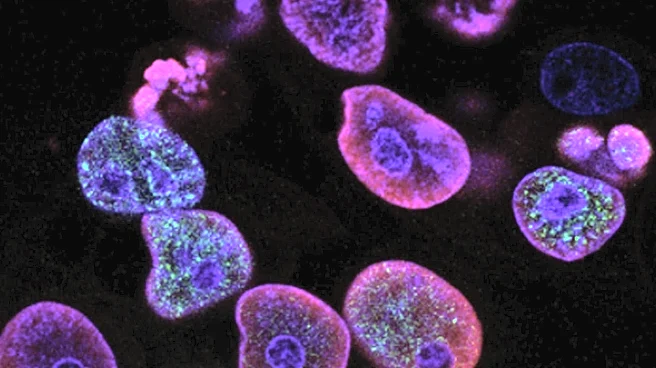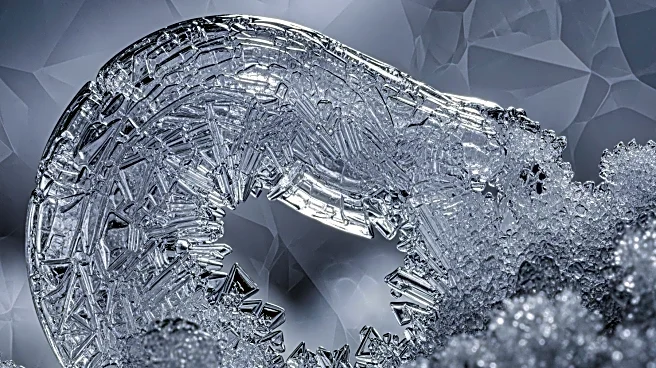What's Happening?
Researchers at the Department of Energy's Pacific Northwest National Laboratory have discovered that ice, despite forming in a hexagonal lattice, is surprisingly flexible and malleable. This discovery was made through molecular-resolution observations of nanoscale ice samples, revealing that dissolved gas can generate cavities in ice crystals and migrate, merge, and dissolve. The findings, published in Nature Communications, open new opportunities to explore ice crystallization and melting behavior at scales previously unimaginable.
Why It's Important?
The discovery of ice's flexibility at the molecular level has significant implications for various fields, including cryogenic preservation, aviation safety, and glacier movement studies. Understanding how ice tolerates structural imperfections and trapped bubbles can inform the development of technologies to prevent ice formation in critical applications. This research also contributes to the broader understanding of ice dynamics and its role in supporting life on Earth, particularly in marine environments.
What's Next?
The research team plans to study ice melting and work with more complex samples, including water with dissolved materials. The findings could lead to advancements in cryogenic preservation techniques and improve safety measures for aviation and vehicle operations in icy conditions. Further research will explore the mechanical properties of ice crystals and their behavior under different environmental conditions, potentially leading to new insights into ice dynamics and its impact on global ecosystems.










